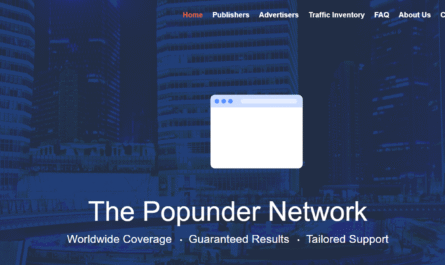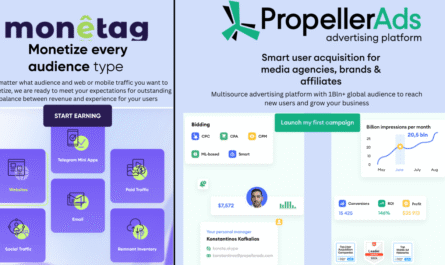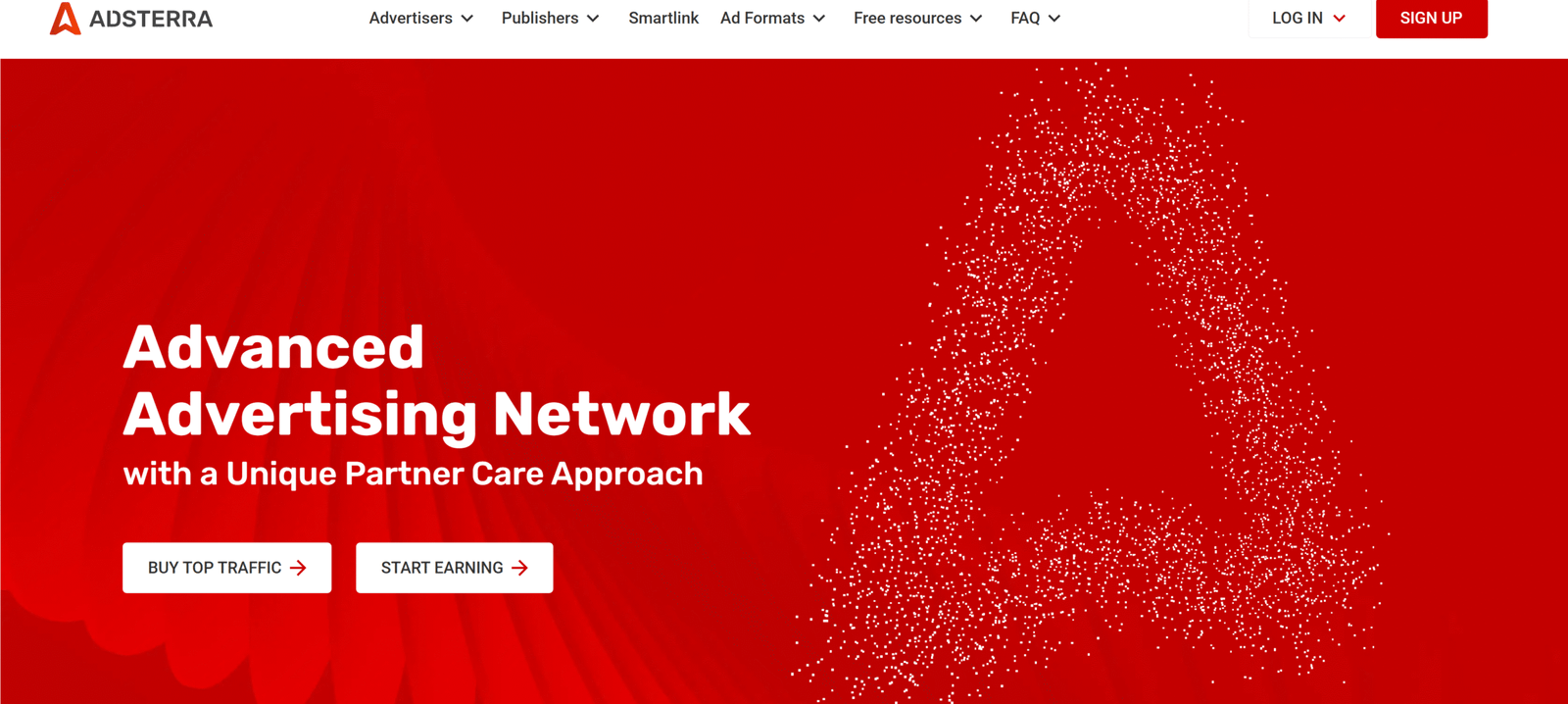CPM advertising networks have changed greatly. Google AdSense is no longer the CPM advertising case. Competitors of different advertising networks have advanced CPM advertising capabilities with customized audience targeting, real-time data, and different mobile advertising options. Real-time bidding, automated ad selling, and other advertising tools are available to any publisher, even the ones with no bidding expertise or big budgets.
Websites with passive audiences and large traffic will tend to do well with CPM advertising. This is because no audience interaction is needed for CPM advertising to work. To improve CPM revenue, visibility of ads should be ensured, traffic and ads should be segmented, header bidding should be used, different ads should be offered, mobile optimization should be done, ad refreshing should be done, and premium demand sources should be used.
This article looks at a selection of CPM ad networks. Some of these are Google AdSense, AppNexus, and PopAds. The article looks at their ad formats, traffic requirements, CPM rates, and payout structure. Some of the most important factors for choosing a CPM ad network are traffic, content type, ad format type, and revenue goals.
What Is CPM?
CPM (cost per mille) is a popular pricing strategy in the digital advertising industry. According to this strategy, marketers are charged a fixed fee for every 1,000 times their advertisement is displayed or presented, regardless of whether people engage with it or not. This distinguishes CPM from the cost per click (CPC) model, which costs according on user involvement. The CPM approach is especially popular in mobile advertising, where the huge amount of traffic makes impressions an important indicator for determining ad performance. CPM is beneficial to publishers since it delivers a consistent and predictable revenue stream, making it an excellent choice for monetizing content aimed at passive consumers on a big scale.
ALSO READ: EpicAds Review 2025 – Features, Spy Tool, Payments, Pros & Cons
How CPM Advertising Works for Publishers
- CPM advertising is based on acquiring a big audience to generate income for publishers.
- Ad networks or SSPs provide a variety of ad formats (display, native, or video) and track impressions in real time.
- Revenue is created each time an ad displays on a user’s screen, resulting in a payout per thousand impressions.
- Publisher income are not based on user clicks; just presence and scrolling are sufficient.
- CPM is vital for mobile monetization since it is passive, predictable, and scalable with traffic.
- Optimizing ad placement, viewability, and audience quality is critical for achieving higher rates.
- High impression counts, even from low-engagement users, are still valued by CPM.
5 best CPM ad networks for publishers
SmartyAds
- SmartyAds CPM publisher SSP is a programmatic full-stack infrastructure developed over 8+ years, offering access to premium advertisers.
- The platform serves billions of impressions monthly, achieving high fill rates across various geographies and ad formats including the U.S, Israel, UK, India, and Germany.

- Core features include:
- Omnichannel monetization options such as rewarded videos, interstitials, native, and banner ads.
- Header-bidding capabilities, including a lightweight SDK for mobile apps.
- High-volume private marketplace deals for selling exclusive inventory.
- Customizable ad campaign configurations based on publisher needs.
- Real-time analytics for performance metrics like impressions and revenues.
- Achieves over 90% viewable impressions and strong fill rates across networks.
- Ensures clean traffic through scans from Protected Media and Forensiq, adhering to ads.txt and GDPR compliance.
- Supports a range of verticals suitable for different publishers with a key focus on business, financial services, software, travel, and media.
- Offers competitive CPM rates up to $8 and supports payments via Wire Transfer and PayPal, with a G2 User Rating of 4.5 stars.
- Considered a viable alternative to Google AdSense for various publisher sizes.
Google AdSense
- Google AdSense is a prominent CPM network that enables publishers to show both CPM and CPC advertising.
• Gives you access to AdX, Google’s premium tools for sophisticated targeting and optimization.
• Publishers must fulfill stringent eligibility requirements to join, and if authorized, they will have access to nearly 2 million advertisers.
• The revenue split is 68% for publishers and 32% for Google.
• Core features include Ad Balance, which displays the highest-paying advertising.

- A/B testing for creative professionals.
- Real-time optimization ideas.
- Integrated analytics with Google Analytics synchronization.
- Simple setup, with little code necessary.
- Payouts are available in 51 currencies using a variety of ways.
• AdSense is known for its significant monetization potential, with substantial click rewards (up to $25 per tier-1 traffic).
• Strict approval procedure, yet plenty with features, with a 4.0 rating on G2.
Appnexus

- AppNexus is a sophisticated ad exchange platform for publisher monetization with real-time bidding (RTB) and private marketplace (PMP) capabilities. The platform manages over 11 billion daily impressions and offers a variety of advertising channels
• Key features include the integration of RTB and private marketplace functionality. - Improved support for video advertisements and header bidding.
- Controls over floor pricing and inventory management.
- Real-time analytics are offered without a traffic threshold.
- Tools for assuring traffic quality are available on the platform.
- Support for more than 25 advertising verticals.
33 across

- 33Across links publishers to a worldwide advertising pool.
- Account managers provide help and extensive performance analytics.
- The company is known for great client service and different verticals. Key features include a detailed user interface for controlling ads.
- Header bidding and unified auctions.
- Ad formats designed for desktop, mobile, and tablet devices.
- Performance metrics and content tracking.
- Direct access to marketers including Amazon and Airbnb.
- Flexible integration options.
Propeller Ads

- Propeller Ads supports over 150,000 publishers with diverse ad formats and global language support.
- The platform provides multiple payment methods and does not require a traffic threshold, making it suitable for newcomers.
• Key advantages include high CPM rates for tier-1 traffic. - The minimum payment is set at $5.
- An anti-fraud ad rendering system.
- A patented ad-blocker bypass method.
- A varied range of advertising forms, including pop-unders.
Final Thoughts: The CPM Jungle Is Bigger Than You Think
Google AdSense is a major participant in the advertising ecosystem, but there are countless alternative CPM (Cost Per Mille) ad networks that are getting more competitive. This compilation showcases many agile CPM networks that provide benefits such as higher rates, more diversified ad formats, and user-friendly dashboards. When choosing the best CPM network, it is critical to match your decision with certain goals, such as achieving high CPM rates, acquiring versatile ad formats, or having exact inventory management. Prioritizing these needs makes it easier to decide which network to use.




One thought on “Top 5 best CPM ad networks review”